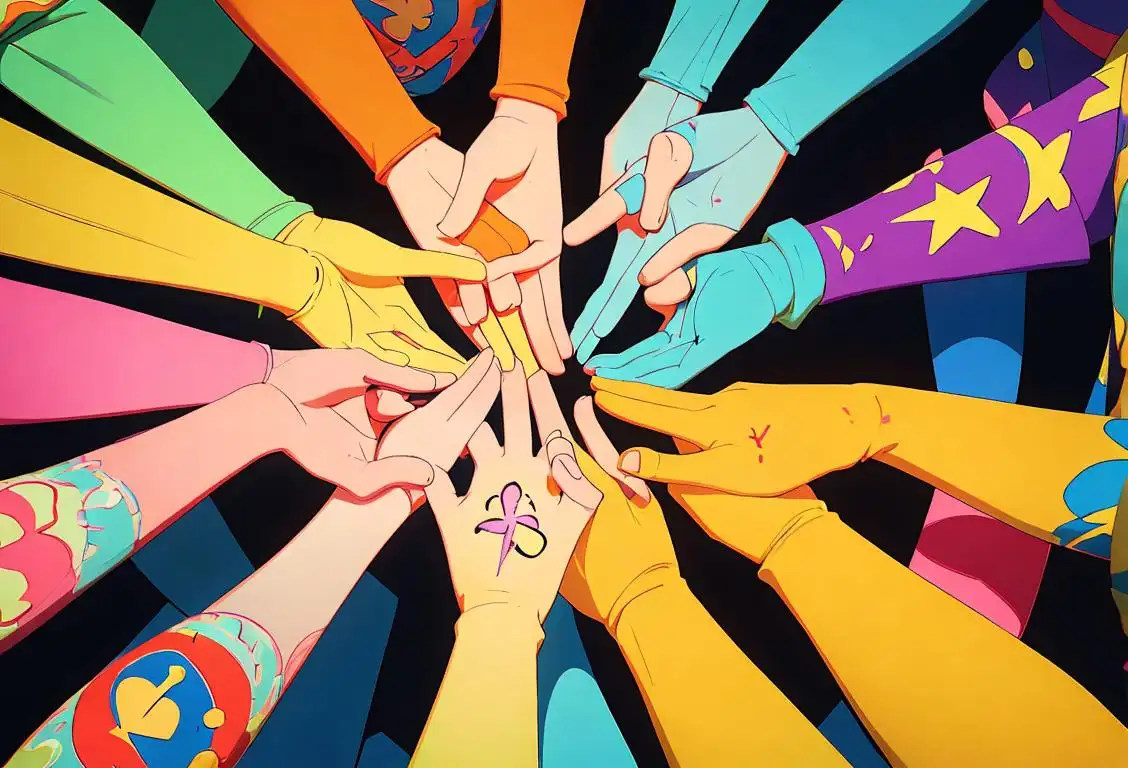National Stepfamily Day

Stepfamilies, the ultimate blend of love, chaos, and awkward family dinners. Let's dive into the wonderful world of stepfamilies and celebrate National Stepfamily Day!
When is Stepfamily Day?
It's national stepfamily day on the 16th September.
The History of National Stepfamily Day
Every September 16th, we celebrate National Stepfamily Day to honor the unique families formed through the blending of two separate families. Whether it's the result of a new marriage or a long-term partnership, stepfamilies deserve recognition for the love and commitment they bring.
The concept of stepfamilies, also known as blended families, has been around for centuries. But it wasn't until the internet era that National Stepfamily Day gained popularity. The online community played a significant role in raising awareness and acknowledging the challenges and triumphs of stepfamily life.
Did you know? The term 'stepfamily' originates from the Old English word 'steop' which means 'bereft' or 'bereaved'. It refers to the idea of a family that is formed after the loss of a spouse or parent.
Celebrating Stepfamily Love
Stepfamily dynamics can be complex, as blending two separate families brings together different backgrounds, traditions, and personalities. National Stepfamily Day is an opportunity to appreciate the strength and love that make these families work.
On this day, stepfamilies gather together to celebrate their unity and build stronger bonds. It's a time to honor the unique roles and responsibilities that step-parents and step-siblings take on, embracing the challenges and joys that come with it.
Many families celebrate by participating in fun activities that promote togetherness and understanding. From picnics in the park to movie nights at home, the possibilities are endless!
The Internet's Role in Stepfamily Support
The internet has become a valuable resource for stepfamilies worldwide. Online support groups, forums, and blogs connect people who understand the triumphs and challenges of managing a blended family.
Stepfamily members can find comfort in knowing that their experiences are shared by others. The internet has provided a platform for step-parents to learn from each other, exchange advice, and vent about their daily escapades.
Moreover, National Stepfamily Day owes much of its recognition to social media. Stepfamilies use hashtags, such as #StepfamilyDay, to share their stories, celebrate their love, and advocate for stepfamily rights and support.
Building Stronger Stepfamily Connections
Whether you're a step-parent, step-sibling, or stepchild, building stronger connections within the stepfamily is crucial. National Stepfamily Day reminds us of the importance of open communication, trust, and empathy. It's an opportunity to appreciate the quirks, differences, and similarities that make each stepfamily special.
So, on September 16th, take a moment to honor the joys and challenges of your stepfamily. Embrace the chaos, the laughter, and the love because, in the end, it's the unique bond of a stepfamily that makes it truly special.
History behind the term 'Stepfamily'
1803
The Coined Term
The term 'stepfamily' was coined in 1803, deriving from the Old English word 'steop', meaning orphan or bereaved. It was used to describe families formed through the remarriage of a widowed or divorced person with children.
1500s
Origin of the term 'stepparents'
In the 1500s, the term 'stepparents' began to emerge, referring to individuals who married a person with children from a previous marriage. It was during this time that the concept of a 'step' relationship was first recognized within society. The prefix 'step-' signified the connection between the newly married individual and their spouse's children, emphasizing the additional role they took on.
1950
Popularization in Psychology
In the 1950s, with the rise of psychology as a respected field of study and research, the term 'stepfamily' gained popularity. Psychologists recognized that stepfamilies faced unique challenges and dynamics, leading to the increased use of the term in scientific literature.
19th century
Earliest usage of the term 'stepfamily'
By the 19th century, the term 'stepfamily' started to gain popularity. It referred to a family structure where at least one of the adults had children from a previous marriage or relationship. The term not only captured the idea of an extended family formed through remarriage but also highlighted the role of 'stepsiblings' who became part of the household.
20th century
Recognition of 'stepfamily' in academic research
Throughout the 20th century, 'stepfamily' gained recognition as a distinct family structure in academic research. Scholars began studying the dynamics, challenges, and benefits of stepfamilies, contributing to a better understanding of these unique family configurations. This recognition helped validate the experiences of individuals in stepfamilies and highlighted the importance of supporting and acknowledging their specific needs.
1960
Cultural Shift and Blended Families
The 1960s brought a significant cultural shift, with increasing divorce rates and the acceptance of non-traditional family structures. The term 'stepfamily' became more widely known as the concept of 'blended families' gained recognition, referring to families created through the blending of children and parents from different previous unions.
1960s
Increased visibility and representation of stepfamilies in media
The 1960s marked a shift in the representation of stepfamilies in popular culture. Books, movies, and television series began featuring stepfamily narratives, portraying the complexities and dynamics within these blended families. This increased visibility not only reflected the prevalence of stepfamilies but also contributed to a broader acceptance and understanding of the stepfamily experience.
1970
Stepfamily Support Groups
During the 1970s, stepfamily support groups emerged, providing emotional support, resources, and guidance for individuals navigating the challenges of stepfamily life. These groups played a crucial role in shaping the understanding and acceptance of stepfamilies within society.
21st century
Growing awareness and support for stepfamilies
In the 21st century, there has been growing awareness and support for stepfamilies. Various organizations, websites, and resources have emerged to provide guidance, insights, and support for individuals navigating the challenges and joys of stepfamily life. This increased focus on stepfamilies aims to normalize their experiences and foster a sense of belonging and community.
1980
Media Representation
In the 1980s, stepfamilies gained increased visibility in mainstream media. Movies like 'The Brady Bunch' and 'Yours, Mine & Ours' showcased relatable portrayals of blended families, helping to normalize the concept and further popularizing the term 'stepfamily'.
1990s
Research and Recognition
Throughout the 1990s, research studies focused on stepfamilies gained momentum. Scholars and experts provided valuable insights into the unique dynamics, challenges, and strengths of stepfamilies. As a result, stepfamilies gained recognition as a legitimate family structure, deserving of support and understanding.
Present
Continued Evolution
Today, the term 'stepfamily' remains widely used and accepted, reflecting the diverse and ever-evolving nature of family structures. Support networks, online communities, and educational resources now exist to assist stepfamilies in navigating their unique journey.
Did you know?
The term 'stepfamily' originates from the Old English word 'steop' which means 'bereft' or 'bereaved'. It refers to the idea of a family that is formed after the loss of a spouse or parent.Tagged
awareness fun loved onesFirst identified
16th September 2015Most mentioned on
16th September 2015Total mentions
300Other days
Compliment Day
Cheese Pizza Day
Pumpkin Day
Medal Of Honor Day
Guac Day
Foundation Day
Suicide Prevention Day
Memorial Day
Cancer Survivors Day
Bacon Day









